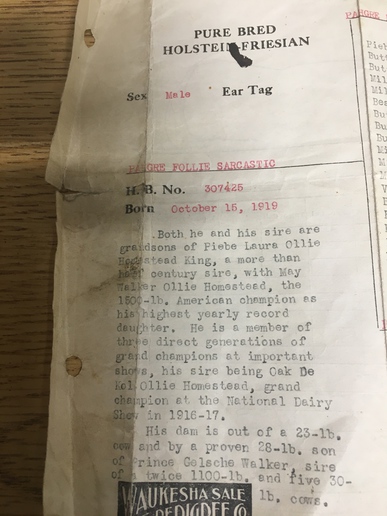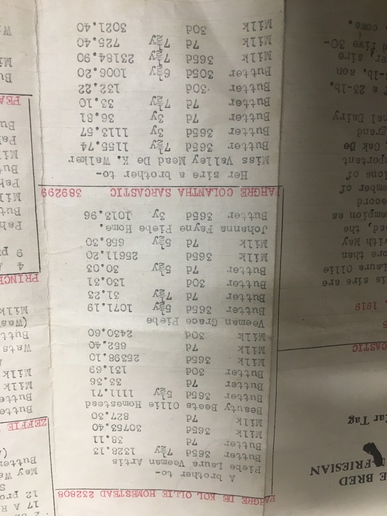Naylorbros
Member
My great grandfather loved his Holstein cow and liked to spend money getting more of them. When my grandmother got married she brought her cows with her and started a small herd at her new home. They were in the dairy business until 1958 when they were told they needed to upgrade from Surge buckets. My grandfather called the Brigham Young University Dairy and the truck arrived the next day to pick up all of the cows but one. The BYU dairy had been after the cow for a few years. The reason I am posting this is we ran into a few pedigrees of cows and bulls that my great grandfather bought. This is the oldest of the one I looked at for a bull that was born in Oct. of 1919. Look at the production numbers and see how they have changed over the years. I hope you can read them as pictures as I did not think the paper would survive the scanner
Thanks
Ken


Thanks
Ken



